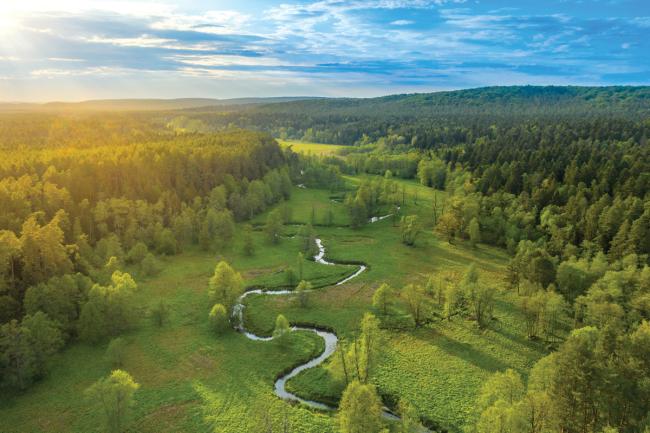A varity of forest types in Poland play an important role in the country's ecosystem and cultural heritage.
Poland is home to a variety of forest types, which cover an area of nearly 9.3 million hectares and account for 29.6% of the country’s total land area. These forests play an important role in the country’s ecosystem, economy and cultural heritage. The forests are dominated by coniferous species, which together cover 76.6% of the area. These include pine, larch, spruce and fir. Deciduous species appear on 23.4% of the area.
Polish forests are known for their rich biodiversity, creating living space for plants and animals. This is especially true of natural forests, which are remnants of ancient primeval forests. These have the highest biodiversity among Poland’s ecosystems, and forests are home to about 65% of all the country’s species, including rare and endangered species. Forests are home to large mammals such as bison, wolves, lynx and wild boar, as well as a variety of birds, insects and reptiles.
Forests in Poland perform a variety of natural functions. First of all, they shape the local climate, and contribute to the retention of dust and gas pollutants, including the absorption of carbon dioxide, which, combined with the production of oxygen, leads to air refreshment. This is particularly important in the vicinity of large industrial plants and urban agglomerations. They contribute to the proper circulation of water in nature as a result of transpiration, soil and biological retention (retention of rainwater on the surface of leaves, branches, tree trunks) and slow down snow melt and surface runoff of snowmelt and rainwater, which counteracts floods, avalanches and landslides. They also act as a buffer, trapping pollutants to protect the waters of lakes and rivers.
Forests in Poland have many important social functions. First of all, they provide an environment for physical and mental regeneration, especially for residents of large urban areas. To make this possible, tourism and recreation infrastructure is being created in the form of hiking, biking and horseback riding trails, camping areas, forest parking lots, shelters, health paths, viewing platforms, etc. They form the basis of local employment both directly in forests and in sectors directly and indirectly related to forestry, such as tourism or wood processing. In Poland, there are 454,000 employees in the forestry and timber sector, and 25,000 in state forests. The forest is the basis for much scientific research and is used to raise environmental awareness.
In Poland, the vast majority of forests are economic in nature, which means that they are managed to provide primarily timber but also other raw materials of plant and animal origin. According to the Central Statistical Office, 42.2 million cubic metres were harvested in 2021, i.e. 6.5% more than a year earlier and 25% more than in 2010.
According to the Forest Law that came into effect on 28 September 1991, commercial forests are divided into production and protected forests. The first provide raw timber and forest fruits and are semi-natural forest complexes, as well as monoculture plantations of fast-growing trees. The second group is protected forests, in which economic use is restricted. These include soil-protection forests, microclimate-protection forests, recreational and recreational spa-climate forests, which protect conditions conducive to improving health around sanatoriums and spas. At the end of 2021, the status of protected forests, i.e. those with non-productive functions, applied to almost 4 million hectares, i.e. more than 42.2% of Poland’s forest area.
This article is an excerpt of a briefing by Andrej Kassenberg to be published by AirClim later this year with the aim to explain the importance of forests in the EU for biodiversity and climate protection.































